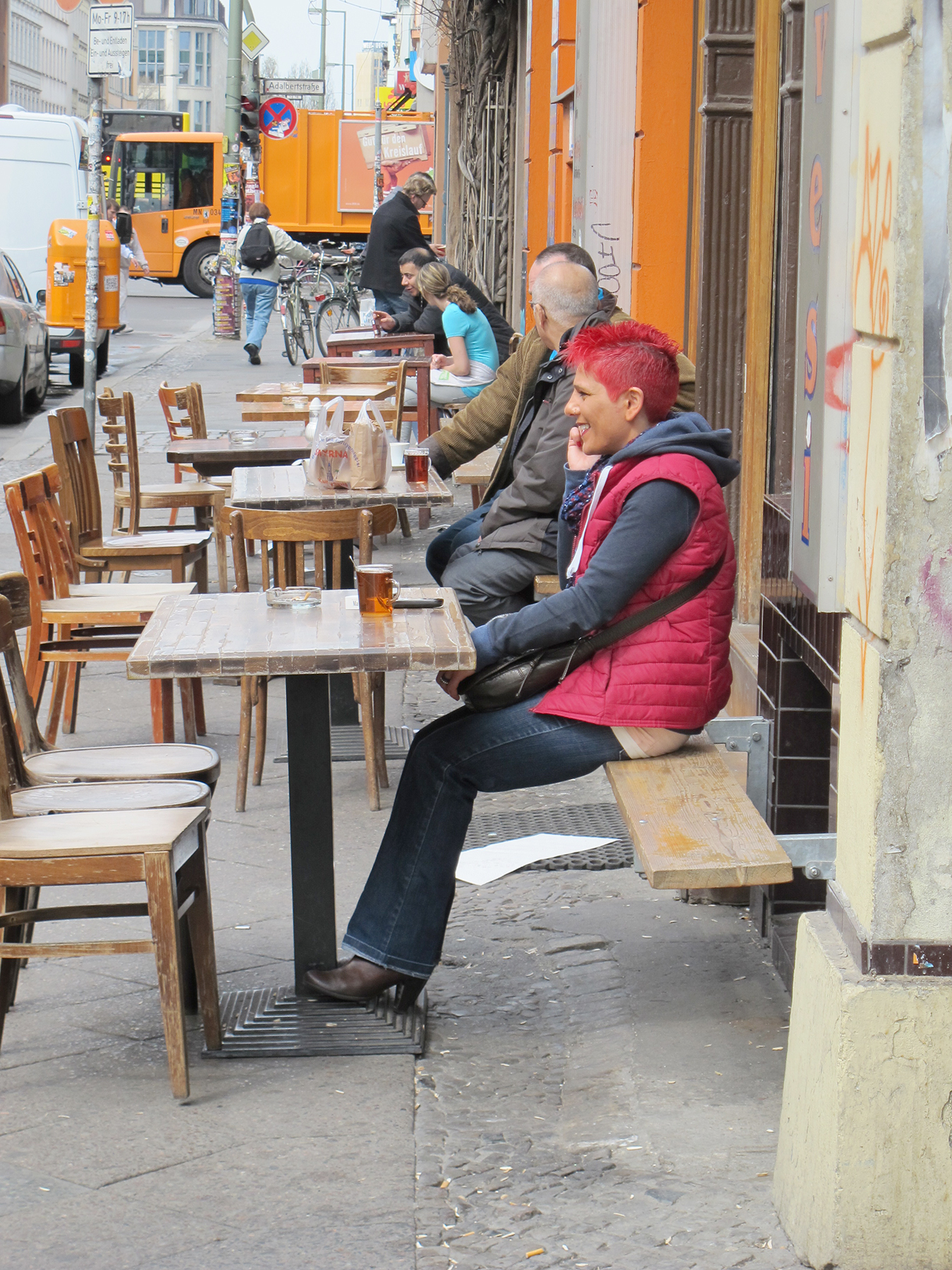The neighborhood where I have now lived for 35 years is utterly familiar, yet also undergoing constant change. On a larger scale, there are endless trees cut for sub-divisions or single housing, people leaving, people moving in. Families with young children are a welcome addition, and you now hear other languages than plain English on your walks. On a smaller scale, my garden surprises me every year with unpredictable change. This year there’s nary a blueberry on the bush that bent over with them last year, tons of foxgloves have self-seeded, brought in by the wind or the deer, attracting a plethora of bees. The daisies have finally outnumbered the buttercups in the lawn, which took only about 5 years, and the fuchsias have decided to become trees, in full bloom already. It all provides a sense of place.



It is much harder to get a true sense of place if you only visit, and that for short amounts of time. What will define it when you travel? Your visual impressions? Your interaction with the locals? The landscape that defines the surrounds or the climate? The history that you read up on, maybe? Are you a better able to “get” a place, if you have widely traveled and so can make comparisons? If you go in utterly naive or geared by expectations based on external introductions? Will coincidences play a role, an aversive experience at the hotel, or an unanticipated encounter with the nicest people? These latter events might shape, perhaps, whether you like a place or not, which is different from having a sense of place.





Here is the cause for these musings: Anastasia Savinova, a Ukrainian artist based in Sweden, has generated some creative photo collages, trying to extract a sense of place – Genius Loci – from a large scale entity, a city or rural area, and then injecting it into a small scale object, a building. Guided by architectural cues, visual details, a good sense for local prevalence of certain colors, she constructed these buildings into formations that capture the shapes or ornamentation or idiosyncrasies of places like Paris, Bruxelles, Berlin, and cities in Italy and Holland. I had immediate recognition, before reading the labels for most cities, from my own travels which are guided by visual exploration more than anything else, which meant she really captured something that is specific to each place. Pretty nifty.






The most successful montages, less compressed and calmer, are, in my opinion, the ones that depict places in her geographic vicinity, the Scandinavian countries she lives in or has often visited. Perhaps longstanding exposure. living in a place, leads to true familiarity. This in turn allows you to distill an essence after all, not just a jumbling of multitudinous elements that caught your attention on the road, no matter how much they are part of the reality of those cities. Whatever one thinks of the printed works – they might speak more to those who have the lovely jolt of recognition – the idea itself is creative.



Will I ever travel again? Will the experience change after this eternal time of confinement? Why can my desire to roam not be stilled, even when I have the perfect model right in front of me, a wonderfully snippy ode to small scale familiarity by Billy Collins?
A Sense of Place
If things had happened differently,
Maine or upper Michigan
might have given me a sense of place–
a topic that now consumes 87%
of all commentary on American literature.
I might have run naked by a bayou
or been beaten near a shrouded cove on a coastline.
Arizona could have raised me.
Even New York’s Westchester County
with its stone walls scurrying up into the woods
could have been the spot to drop a couple of roots.
But as it is, the only thing that gives me
a sense of place is this upholstered chair
with its dark brown covers,
angled into a room near a corner window.
I am the native son of only this wingback seat
standing dutifully on four squat legs,
its two arms open in welcome,
illuminated by a swan-neck lamp
and accompanied by a dog-like hassock,
the closest thing a chair has to a pet.
This is my landscape–
a tobacco-colored room,
the ceiling with its river-like crack,
the pond of a mirror on one wall
a pen and ink drawing of a snarling fish on another.
And behind me, a long porch
from which the sky may be viewed,
sometimes stippled with high clouds,
and crossed now and then by a passing bird–
little courier with someplace to go–
other days crowded with thunderheads,
the light turning an alarming green,
the air stirred by the nostrils of apocalyptic horses,
and me slumped in my chair, my back to it all.
Photographs were chosen to add life to the depicted places – people I photographed in the cities captured in the collages.
Music will stretch our brain a bit, a beautiful performance by the Kronos Quartett. I figured a focus on the planet is needed to balance out a focus on an armchair….






Steve T.
Really enjoyed those collages, Friderike. My travel experiences are limited, but at least I appreciated this sense of community, buildings piled one upon another to use space efficiently, and somehow revealing the complex interconnectedness of human life. Thanks.
Carl Wolfsohn
Thanks for the photos and meditation on place! There is a 2020 short film called GENIUS LOCI nominated for an Animated Short Oscar.
Sara Lee Silberman
Fascinating, rich post. On which I could definitely use a tutorial by its author….